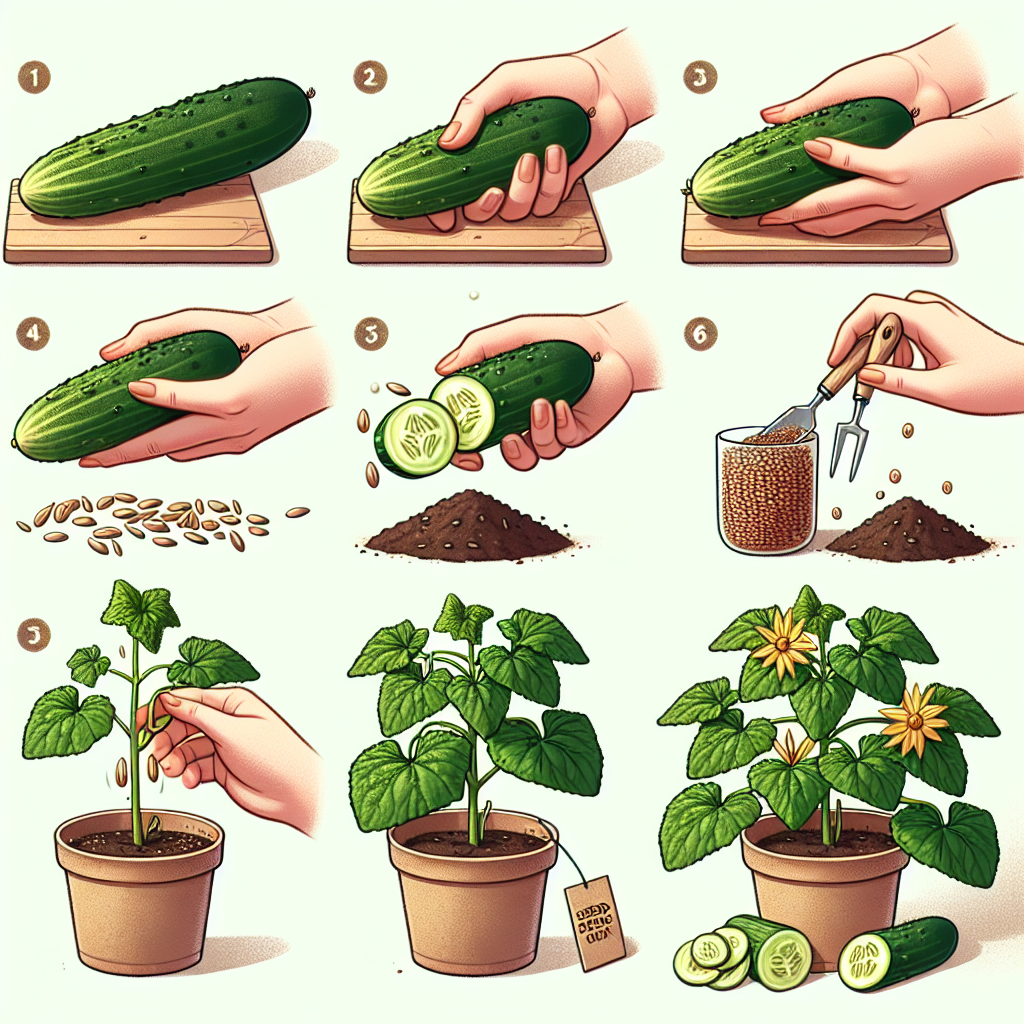
How to grow cucumber from cucumber at home
How to Grow Cucumber from Cucumber at Home
Cucumbers are not only refreshing and delicious but also relatively easy to grow at home. With the right techniques, you can simply use a cucumber from the market or your garden to start a new crop. This guide will show you how to grow cucumber from cucumber at home, step by step, ensuring you have a fruitful harvest in your backyard.
Understanding Cucumbers
Cucumbers belong to the gourd family and are known scientifically as Cucumis sativus. They thrive in warm temperatures and require plenty of sunlight, making them perfect for home gardening. Before you start your cucumber-growing journey, it's essential to understand the different varieties of cucumbers and their growing conditions.
- Slicing Cucumbers: These are commonly used in salads and sandwiches.
- Picking Cucumbers: Smaller and often used for pickling.
- Burpless Cucumbers: These have fewer seeds and a milder flavor.
Each variety comes with its own specific needs in terms of care, but they all share a need for warm soil and an abundance of sunlight.
Gathering Your Materials
Before you can start growing, ensure you have everything you need:
- Fresh organic cucumbers
- Potting soil or garden soil
- Pots or garden space
- Watering can or hose
- Fertilizer (optional)
Choose a healthy cucumber from your local market or farm. The best candidates for this process are those that are fully ripe and firm with seed-filled interiors.
Preparing the Cucumber for Planting
Once you've gathered your materials, it's time to prepare the cucumber. Follow these steps:
- Select a Fresh Cucumber: Choose one that is ripe but not overripe.
- Cut the Cucumber: Slice the cucumber lengthwise to expose the seeds. Alternatively, you can cut it into small pieces, each containing a seed.
- Save the Seeds: Gently scoop out the seeds using a spoon, being careful not to damage them.
After extracting the seeds, you can rinse them in water to remove any pulp. Allow them to dry for a few hours on a paper towel.
Sowing Cucumber Seeds
Now that you have your seeds ready, it's time to plant them. Here’s how:
- Choose a Suitable Location: Cucumbers love full sun, so select a sunny spot in your garden or patio.
- Prepare the Soil: Mix potting soil with compost to create nutrient-rich ground. It should be well-draining and slightly acidic.
- Plant the Seeds: Plant your seeds about one inch deep and 12-18 inches apart. If you’re using cucumber slices, ensure each slice is spaced similarly.
- Water Gently: After planting, lightly water the soil to keep it moist but not soggy.
Caring for Your Cucumber Plants
The real secret to successful cucumber cultivation lies in the care you provide. Here are some essential care tips:
- Watering: Ensure your plants receive consistent watering, especially in dry spells. Aim for about an inch of water per week.
- Fertilizing: When your plants begin to grow, consider adding a balanced fertilizer every few weeks for nutrient boost.
- Support Structures: Depending on your cucumber variety, using trellises can help them grow vertically, saving space and improving air circulation.
- Pest Control: Keep an eye out for pests such as aphids or cucumber beetles. Organic pesticides can help mitigate infestations.
Harvesting Your Cucumbers
After weeks of attentive care, it's finally time to enjoy the fruits of your labor! Here’s how to know when your cucumbers are ready for harvest:
- Color: Look for vibrant green hues without yellowing.
- Size: Most varieties of cucumbers are typically harvested at about 6 to 8 inches long.
- Firmness: Cucumbers should feel firm to the touch and have a crisp texture.
Using a sharp knife or garden scissors, cut the cucumbers from the vine, taking care not to damage the plant. Harvest regularly, as picking encourages the plant to produce more fruits.
Storing and Using Your Cucumbers
Once you've harvested your cucumbers, it's important to know how to store them properly. Follow these guidelines:
- Store cucumbers in the refrigerator to maintain freshness.
- Keep them unwashed until you’re ready to eat them to prolong their shelf life.
- Consider making pickles, salads, or smoothies with your fresh produce!
A Few Troubleshooting Tips
While growing cucumbers can be a rewarding experience, issues may arise. Here are some common problems and their solutions:
- **Wilting Leaves**: This could be a sign of underwatering. Check to see if the soil is dry.
- **Yellowing Leaves**: This may indicate over-fertilization or poor drainage. Adjust accordingly.
- **Bitter Taste**: Often caused by stress due to excessive heat or inconsistent watering. Make sure to maintain moisture levels.
Conclusion
Growing cucumbers from cucumber at home is not only an enjoyable gardening project but also a sustainable practice that can yield delicious results. By following the steps outlined in this guide, you’ll be well on your way to cultivating a thriving cucumber garden. Whether you're doing it for fun or to enjoy fresh salads, the experience of growing your food can be extremely rewarding. Don't hesitate to give it a try—your taste buds will thank you!
By Guest, Published on August 12th, 2024